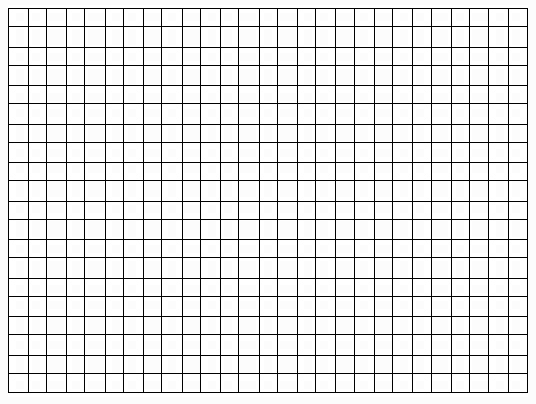
Predator Prey Simulation with Notecards
Objective: Students will simulate predator prey interactions using cards. The number of predator and prey in their “ecosystem” will be recorded and graphed which will show a predator prey cycle in an ecosystem.
Materials (Prepared in advance) Each group will receive 200 small squares cut from index cards (approximately 1 inch squared) -- The small squares represent the prey population.
Each group will receive 50 large squares cut from index cards (cut index cards in half) -- The large squares represent the predator population. Each group will receive a data table (prepared) and blank graph paper to graph the data.
*It is possible to substitute other materials to represent prey and predators, such as beans, paper plates, foam squares, pennies..etc*
Instructions:
Your lab table or desk will represent your ecosystem (Please clear all objects, such as purses and backpacks)
1. Place 3 prey; on your table.
2. Toss 1 predator onto the table (evenly dispersed) and attempt to make the card touch as many prey; as possible. In order to survive, the predator must capture at least 3 prey. It will be impossible for your predator to survive at this point.
3. Remove any prey; captured and record your data for the 1st generation.4. The prey population doubles each generation. Count how many prey (small squares)
you have left on your table, double that number and add prey cards to the table.
Record the number in the data table under the 2nd generation “number of prey staring”. (It should be 2x the number you have under the “hares remaining”
for generation 1)
5. Your predator died during the first round, but that’s okay, a new predator moves in for the second round. Put a 1 in the “number of predators” for generation 2 to represent the new arrival. Repeat the tossing procedure and record your data for the second generation.
6. Again, number or prey doubles, if your predator didn’t “capture”
3 prey, it died. But a new one moves in for the next round. Keep going, adding
to the number of prey each round.
7. Eventually your predator will be able to capture enough prey to survive.
Guess what happens? The number of predators double. Add to your predator population
by adding predator cards. Now when you toss your predators, you will be tossing
more than one. Don’t forget to remove any “captured” prey.
8. Continue to record the data through 20 generations.
Construct a graph. On the X-axis, put generations 1 through 20, on the Y-axis you will have the population numbers for each generation (number of predators, number of prey). Use one line for the predator and one line for the prey to graph the data.
| GENERATIONS | ||||||||||||||||||||
| 1st | 2nd | 3rd | 4th | 5th | 6th | 7th | 8th | 9th | 10th | 11th | 12th | 13th | 14th | 15th | 16th | 17th | 18th | 19th | 20th | |
| # of Predators Starting | ||||||||||||||||||||
| # of Prey Starting | ||||||||||||||||||||
| # of Predators Remaining | ||||||||||||||||||||
| # of Prey Remaining | ||||||||||||||||||||
Graph the Predator and Prey Cycle.
The Y axis will be the number of predators, and the X axis will be time (or generations).
Analysis
1. As the number of prey increase, the number of predators [ increase / decrease ]
2. As the number of prey decrease, the number of predators [ increase / decrease ]
3. In an ecosystem, there should always be [ more / less ] predators than prey.
4. If the prey numbers drop too low, what happens to the predators?
5. Predator prey models are often described as "cycles." Why?
6. Discuss a real world predator prey cycle. What animal would be the predator and what would be the prey? How would their numbers change over time?
Other Resources on Predator Prey Cycles
Ecology Case Study - The Wolves of Isle Royale - population decline and reintroduction of wolves
Predator Prey Graph - graph data on deer and wolf populations (growth curves)
Lesson of the Kaibab - Graph deer population after a catastrophic population decline
Rabbit and Wolf Simulation - collect data, growth curves, analyze how reproductive rates of predator and prey affect growth curves
